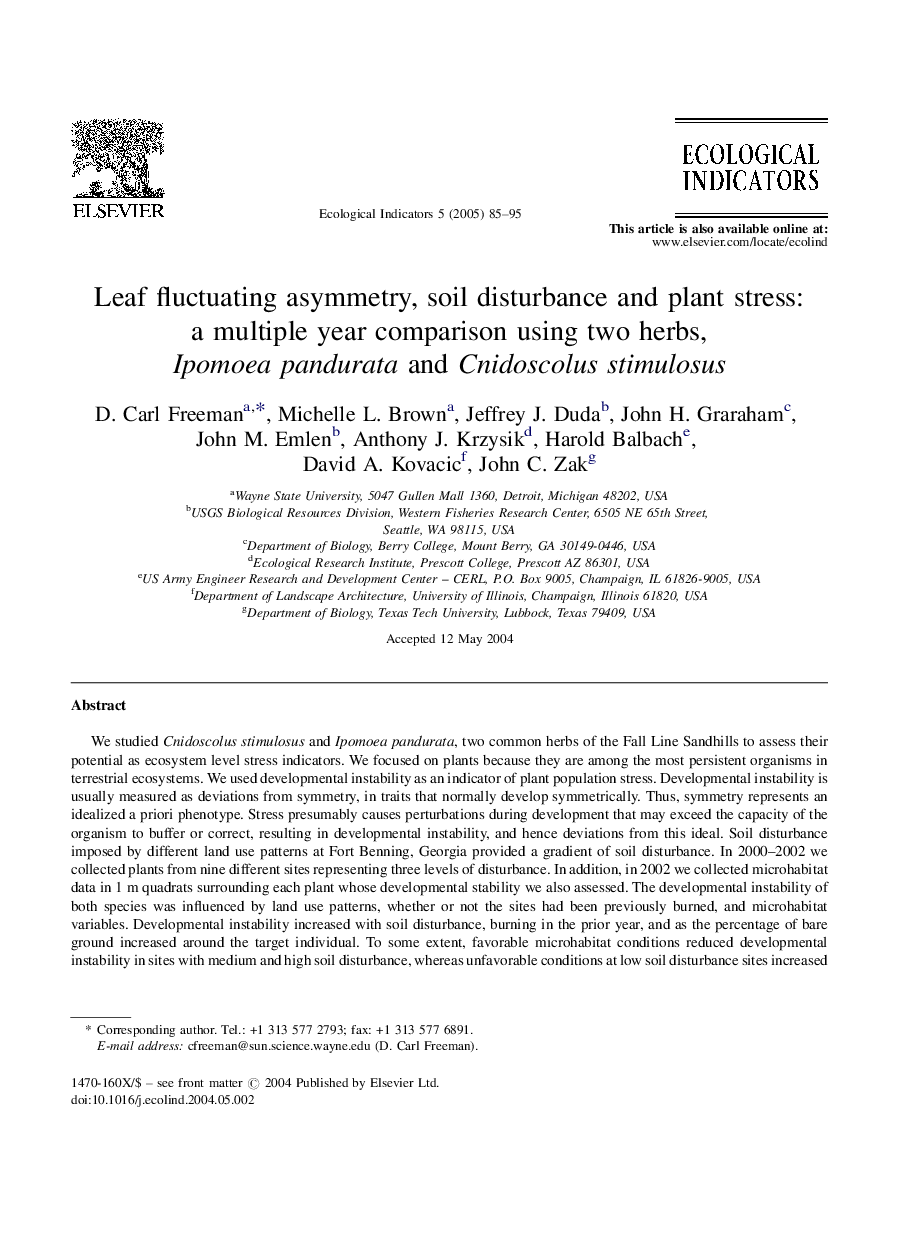| Article ID | Journal | Published Year | Pages | File Type |
|---|---|---|---|---|
| 9443215 | Ecological Indicators | 2005 | 11 Pages |
Abstract
We studied Cnidoscolus stimulosus and Ipomoea pandurata, two common herbs of the Fall Line Sandhills to assess their potential as ecosystem level stress indicators. We focused on plants because they are among the most persistent organisms in terrestrial ecosystems. We used developmental instability as an indicator of plant population stress. Developmental instability is usually measured as deviations from symmetry, in traits that normally develop symmetrically. Thus, symmetry represents an idealized a priori phenotype. Stress presumably causes perturbations during development that may exceed the capacity of the organism to buffer or correct, resulting in developmental instability, and hence deviations from this ideal. Soil disturbance imposed by different land use patterns at Fort Benning, Georgia provided a gradient of soil disturbance. In 2000-2002 we collected plants from nine different sites representing three levels of disturbance. In addition, in 2002 we collected microhabitat data in 1Â m quadrats surrounding each plant whose developmental stability we also assessed. The developmental instability of both species was influenced by land use patterns, whether or not the sites had been previously burned, and microhabitat variables. Developmental instability increased with soil disturbance, burning in the prior year, and as the percentage of bare ground increased around the target individual. To some extent, favorable microhabitat conditions reduced developmental instability in sites with medium and high soil disturbance, whereas unfavorable conditions at low soil disturbance sites increased developmental instability. As an indicator of community level stress, developmental instability is best used in conjunction with other indices of environmental quality.
Related Topics
Life Sciences
Agricultural and Biological Sciences
Ecology, Evolution, Behavior and Systematics
Authors
D. Carl Freeman, Michelle L. Brown, Jeffrey J. Duda, John H. Graraham, John M. Emlen, Anthony J. Krzysik, Harold Balbach, David A. Kovacic, John C. Zak,
